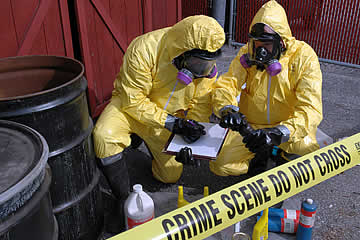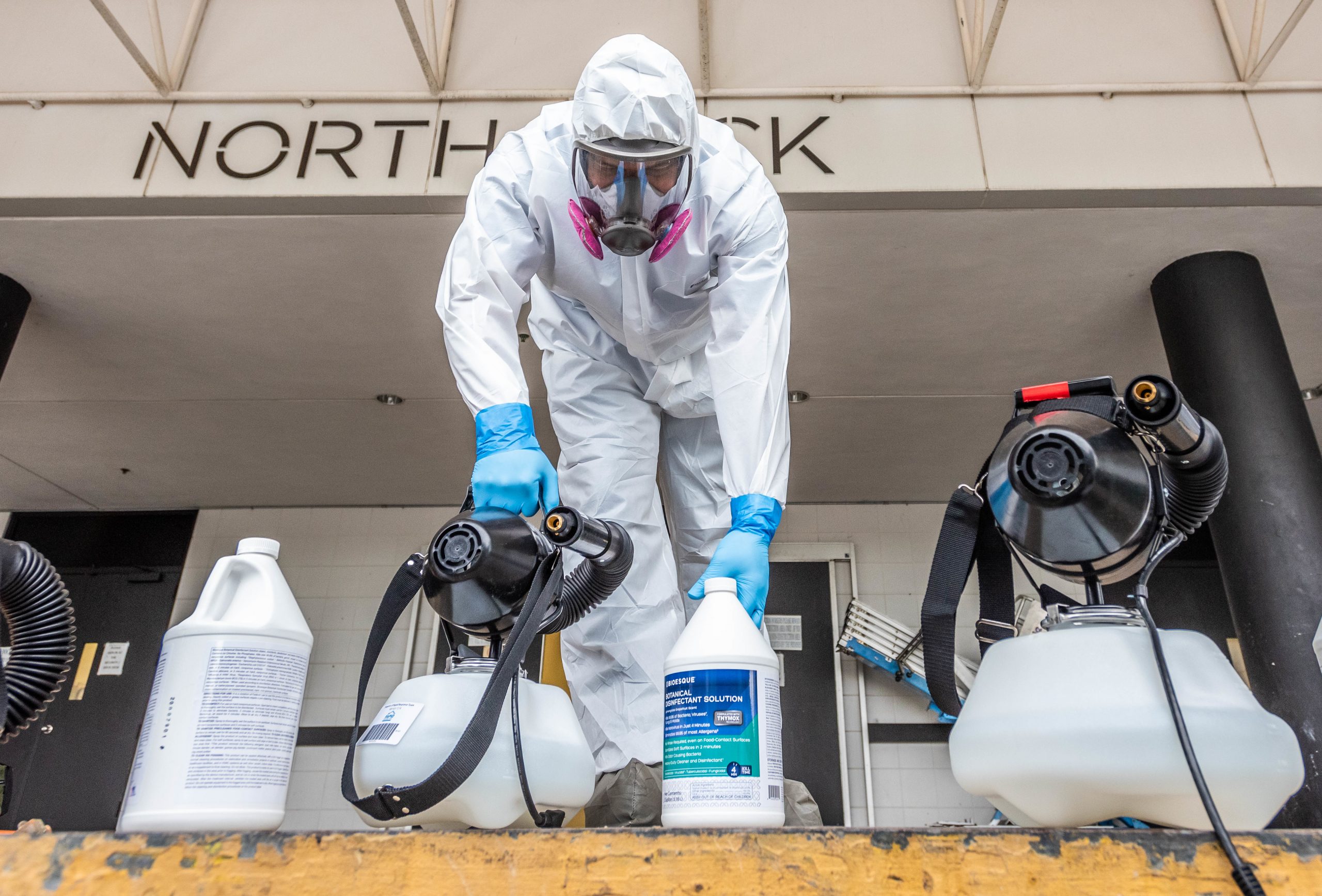Professional Biohazard Cleaning and Decontamination for Blood, Bodily Fluids, and Hazardous Materials
The potential health dangers associated with direct exposure to biohazards underscore the vital demand for precise handling and extensive cleanup. As we navigate the complex landscape of biohazard cleanup, comprehending the nuances of policies, compliance, and the specialized devices at play comes to be crucial in ensuring a thorough and secure decontamination process.
Wellness Risks of Biohazard Exposure
Direct exposure to biohazards postures significant health and wellness dangers that can cause serious effects for neighborhoods and individuals alike. Biohazards incorporate a large range of biological compounds, consisting of blood, physical liquids, mold, bacteria, viruses, and other potentially transmittable materials. When individuals come into contact with these biohazards, whether with mishaps, inappropriate handling, or ecological direct exposure, they encounter the threat of having serious diseases or illness.
Among the key wellness threats related to biohazard direct exposure is the transmission of transmittable conditions. Bloodborne virus such as HIV, liver disease B and C, and numerous microorganisms can be present in biohazardous materials, posing a straight hazard to human health. Breathing in air-borne biohazards like mold spores or entering contact with contaminated surfaces can additionally bring about respiratory system concerns, allergic reactions, and other adverse health impacts.
Moreover, biohazard exposure can have long-term health effects, with some conditions materializing years after the initial get in touch with (Blood Cleanup). Therefore, it is vital to prioritize proper biohazard cleansing and purification to reduce these health threats and make sure the safety of individuals and areas

Specialized Training for Biohazard Cleaning
When it concerns taking care of biohazard cleanup successfully and safely, specialized training plays an essential duty in guaranteeing appropriate purification procedures are complied with. Biohazard cleaning requires certain expertise and skills to successfully minimize risks connected with bloodborne virus, physical liquids, and hazardous products. Experts learnt biohazard cleaning go through extensive guideline on just how to safely deal with, eliminate, and deal with biohazardous materials to protect against contamination and exposure.
Specialized training for biohazard cleanup covers a variety of necessary subjects, consisting of correct individual safety equipment (PPE) usage, bloodborne pathogen understanding, decontamination methods, and harmful waste disposal methods. People educated in biohazard cleaning are outfitted with the essential knowledge to evaluate contamination degrees, identify potential hazards, and implement appropriate cleanup treatments in conformity with governing requirements.
Constant training and education are critical in the field of biohazard cleaning to remain upgraded on the most current purification innovations, security protocols, and regulations. By purchasing specialized training, biohazard cleaning experts can properly react to emergency situation clean-up situations and safeguard both public wellness and the atmosphere.
Significance of Proper Purification Methods
Utilizing correct purification strategies is critical in biohazard clean-up to efficiently remove harmful materials and decrease wellness threats. Effective purification not only ensures the elimination of visible traces of blood, physical fluids, and various other biohazards but additionally targets unnoticeable microorganisms that may posture major wellness risks otherwise appropriately eradicated. By navigate to this site complying with stringent purification methods, trained experts can significantly minimize the risk of exposure to unsafe microorganisms, infections, and bacteria that might bring about illness or infections.
Correct decontamination methods include using customized devices and disinfectants that are especially designed to neutralize biohazards effectively. Detailed cleaning and disinfection of polluted locations are necessary to stop the spread of virus and ensure a risk-free atmosphere for owners. In addition, the appropriate disposal of biohazardous waste complying with purification procedures is important in stopping contamination of various other surfaces or people.

Devices and Tools for Safe Cleanup
The proper tools and devices play a critical duty in making sure the risk-free and efficient cleaning of biohazardous products. When taking care of blood, bodily liquids, or harmful materials, biohazard cleaning specialists count on specialized gear to minimize direct exposure dangers and thoroughly decontaminate the affected location. Individual protective tools (PPE) such as handwear covers, safety glasses, coveralls, and masks are vital to shield against direct contact with possibly contagious products. Furthermore, biohazard cleaning sets including anti-bacterials, absorptive products, and biohazard bags are utilized to safely consist of and dispose of contaminated things. Blood Cleanup.
Advanced cleansing tools like hospital-grade anti-bacterials, HEPA-filtered vacuum cleaners, and fogging makers are used to sanitize surfaces and eliminate biohazards effectively. Specialized devices such as sharps containers and biohazard garbage disposal bins are used to safely manage sharp items and biohazardous waste products. By making use of the right equipment and tools, biohazard cleansing specialists can ensure a detailed cleanup process that focuses on safety and security and minimizes health dangers for both employees and passengers of the damaged room.
Regulations and Compliance in Biohazard Cleaning
Proper adherence to policies and compliance requirements is extremely important in biohazard cleansing to make certain the safety and security of both personnel and the environment. Government agencies such as OSHA (Occupational Safety and Health Administration) and the EPA (Epa) have established you can find out more specific guidelines for biohazard cleanup procedures to minimize health risks and ecological contamination. These laws cover a series of facets consisting of the handling, transportation, and disposal of biohazardous materials, as well as the necessary training and protective devices required for personnel associated with the cleaning procedure.
Biohazard cleansing business should stay current with these laws to ensure that their operations meet the called for safety and security requirements. Failure to abide with these guidelines can cause serious repercussions, consisting of fines, legal action, and endangering the health of people and the setting. By complying with stringent laws and conformity steps, biohazard cleansing business can efficiently mitigate dangers and guarantee a complete and safe cleaning process for all parties included.
Conclusion
In verdict, biohazard cleaning and purification require customized training, proper strategies, and adherence to policies. Direct exposure to blood, bodily liquids, and harmful materials presents considerable wellness threats, making it essential to make use of the best tools and tools for risk-free cleaning. By following rigorous procedures and standards, experts can properly mitigate the risks linked with biohazard exposure and make sure click now the safety and security of both themselves and others.
As we navigate the elaborate landscape of biohazard cleaning, understanding the nuances of policies, compliance, and the specialized tools at play becomes essential in making sure a secure and comprehensive purification procedure. (Blood Cleanup)
When it comes to handling biohazard cleanup effectively and safely, specialized training plays a basic role in making sure correct decontamination procedures are followed.Utilizing appropriate decontamination methods is critical in biohazard cleaning to properly eliminate dangerous products and lessen health and wellness dangers. Furthermore, biohazard cleaning kits including disinfectants, absorbent products, and biohazard bags are made use of to securely include and dispose of contaminated things.
Federal government companies such as OSHA (Occupational Security and Health Administration) and the EPA (Environmental Defense Firm) have established specific standards for biohazard cleanup treatments to decrease health and wellness dangers and environmental contamination.